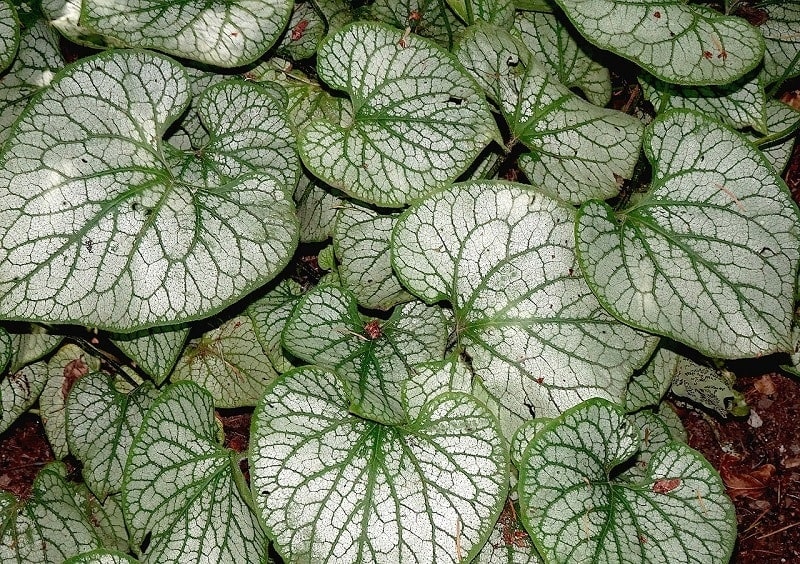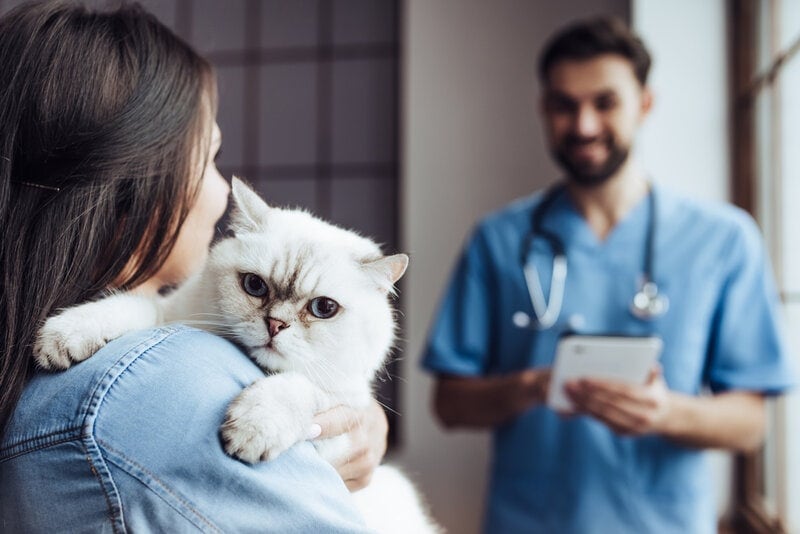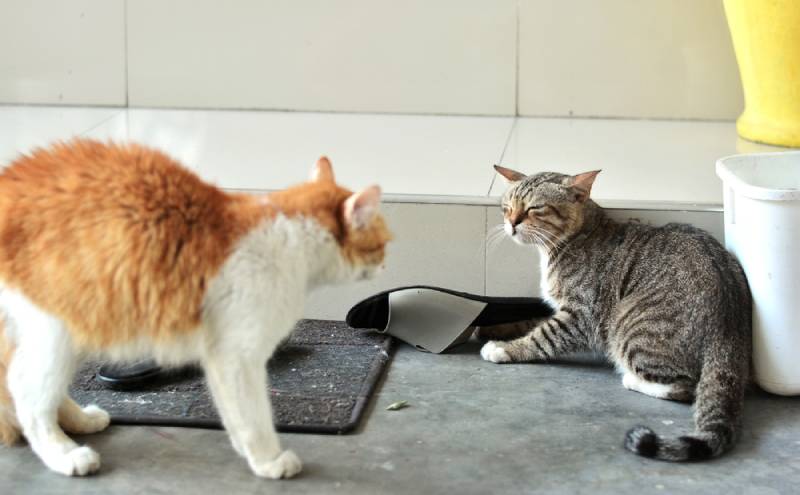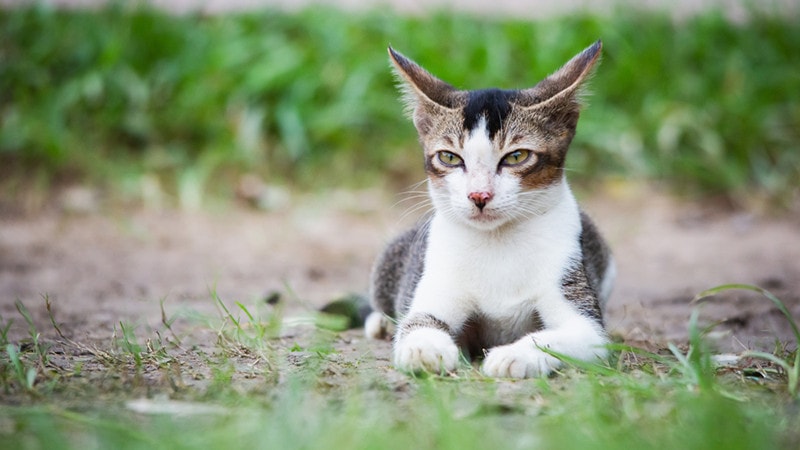Is Peperomia Toxic to Cats? Vet-Approved Safety Facts
Updated on

Click to Skip Ahead
The peperomia plant makes a wonderful houseplant and comes in many different varieties. However, if you own a cat, you need to be careful when bringing any new plants into your home. Cats love to explore everything new and exciting that enters their environment. This means licking, chewing, and eating whatever it is!
Therefore, it’s essential for you to know if any new plants you’re considering are safe or toxic for felines. That said, you should be happy to learn that the peperomia plant is not poisonous to cats.
While this is good news for you, it doesn’t mean you should let your cat eat one of these plants, as they are not exactly healthy. We get into the whys and hows and what you should do if your cat does eat your peperomia plant.
The Peperomia Plant
Peperomia plants originated in subtropical and tropical parts of the world. They are commonly found in the rainforests of Central America, Mexico, and the Caribbean.
- Japanese peperomia
- Watermelon peperomia
- Jayde peperomia
- Red-Edge peperomia
- Teardrop peperomia
- Ripple peperomia
- Variegated baby rubber plant
- Silverleaf peperomia
They are grown for their leaves and not for flowers, and they are one of the easier houseplants to care for.
The Peperomia Plant and Cats

These plants are safe around cats. The ASPCA has listed the peperomia as non-toxic for cats and dogs. However, cats are obligate carnivores, which means that most of a cat’s diet should be made up of meat. They require the kind of protein that they can only get from animal meat and, likewise, many other essential nutrients that must come from an animal source.
These kinds of carnivores can’t properly digest vegetation and plant matter. Too much of this kind of food can lead to digestive issues and stomach upset for most cats, including nausea, vomiting, and diarrhea.
This also means if your cat eats too much of the peperomia plant, they will experience stomach upset. For the most part, though, it shouldn’t seriously harm your cat.
Other Plants That Are Safe for Cats
If you’re interested in filling your home with plants, we have a small list of plants that are known to be non-toxic to cats.
- African violets
- Bamboos
- Boston Fern
- Bromeliads
- Cast-iron plants
- Money trees
- Rattlesnake plants (Calathea)
- Most Succulents
- Swedish ivy
However, any amount of plant eaten can cause stomach upset in most cats.
Common Plants You Should Keep Away From Cats
Conversely, these are plants that you should avoid for your cat’s sake. The signs that your cat might experience when ingesting these plants can range from severe stomach upset to kidney failure and death.
- Autumn Crocus: The autumn crocus is highly toxic and can lead to liver and kidney damage and respiratory failure. You should also avoid the spring crocus because it can lead to stomach upset.
- Azalea: Ingesting a few azalea leaves can cause excessive drooling, vomiting, and diarrhea. Neurological and cardiovascular signs have a rapid onset within minutes to hours and without medical help, the cat can lapse into a coma and die.
- Cyclamen: The roots and tuber of the cyclamen are the most toxic parts and can lead to intense vomiting and diarrhea with heart toxicity and possibly death.
- Lilies: The tiger, day, easter, Japanese show, and Asiatic lilies are all extremely dangerous. If a cat just licks lily pollen or eats any part of the plant, it can cause acute kidney failure and eventually death. Other lilies will cause stomach upset and irritation around the mouth, but it’s best to keep all lilies away from your cat.
- Oleander: All parts of the plant are quite toxic and can cause severe vomiting, a slower heart rate, and possible death.
- Daffodils: These can cause serious vomiting, possible cardiac arrhythmia, and respiratory depression.
- Lily of the Valley: The signs can include vomiting, diarrhea, a drop in heart rate, cardiac arrhythmia, and seizures.
- Sago Palm: The seeds and leaves of the sago palm can cause damage to the stomach lining, bloody stools, vomiting, acute liver failure, and possible death.
- Tulips: The bulb is the most toxic part. Diarrhea, excessive drooling, vomiting, and irritation to the esophagus and mouth might occur.
- Hyacinths: The same outcomes of poisoning as with the tulip might occur with the hyacinth.
These plants aren’t the only poisonous ones out there. You can look up plants through the Pet Poison Helpline website and the ASPCA for much more comprehensive lists of toxic plants and flowers for cats.
If you already have any of these plants in your home and suspect that your cat has eaten some, go immediately to the vet or emergency clinic. Bring the plant with you to ensure proper identification, which will help your vet give your cat the right treatment.
How to Keep Your Cat Away From Your Plants
You don’t have to worry about getting rid of your plants just because of your cat—unless they are on the toxic list. But you should still keep them away from your cat because you don’t want a sick cat, and you’ll want to keep your peperomia from getting mauled.
You can place your plant in a room that is off-limits to your cat, so there’s no access. Otherwise, consider placing it up high in a location that your cat can’t reach. But don’t forget that cats are acrobatic, so ensure that there are no surfaces that your cat can jump from.
You can also consider using a cat deterrent spray around or on your peperomia so your cat will naturally not want to go near it.

 Conclusion
Conclusion
If you believe that your cat has eaten something toxic, contact your vet right away. You can also call Animal Poison Control at 1-888-426-4435 or the Pet Poison Helpline at 1-855-764-7661, so you know exactly what you should do.
The peperomia is safe enough for your cat, but you still don’t want your cat to eat any of it. If they do, your cat might vomit and feel out of sorts for a day or two, which is reason enough to keep this plant out of your cat’s reach.
- Related Read: Are Snapdragons Poisonous to Cats?
Featured Image Credit: Pixabay













